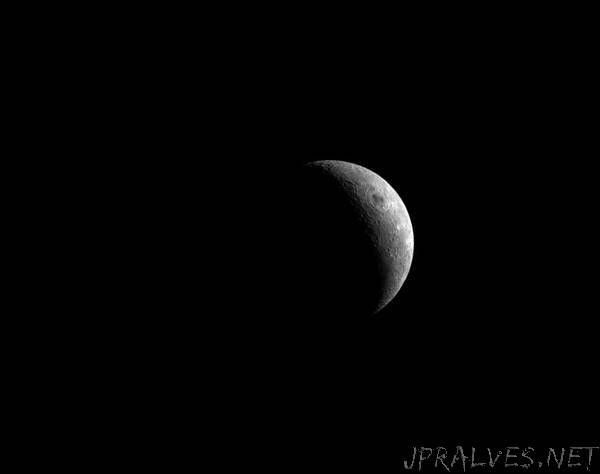
“On the eighth day of its mission, Orion continues to travel farther away from the Moon as it prepares to enter a distant retrograde orbit. The orbit is “distant” in the sense that it’s at a high altitude from the surface of the Moon, and it’s “retrograde” because Orion will travel around the Moon opposite the direction the Moon travels around Earth.
Orion exited the gravitational sphere of influence of the Moon Tuesday, Nov. 22, at 9:49 p.m. CST at a lunar altitude of 39,993 miles. The spacecraft will reach its farthest distance from the Moon Friday, Nov 25, just before performing the next major burn to enter the orbit. The distant retrograde orbit insertion burn is the second in a pair of maneuvers required to propel Orion into the highly stable orbit that requires minimal fuel consumption while traveling around the Moon.
NASA’s Mission Control Center at the agency’s Johnson Space Center in Houston unexpectedly lost data to and from the spacecraft at 12:09 a.m. for 47 minutes while reconfiguring the communication link between Orion and Deep Space Network. Teams have resolved the issue, and the spacecraft remains in a healthy configuration while engineers analyze data to determine the cause.
While in transit to the distant retrograde orbit, engineers conducted the first part of the propellant tank slosh development flight test, called prop slosh, which is scheduled during quiescent, or less active, parts of the mission. The test calls for flight controllers to fire the reaction control system thrusters when propellant tanks are filled to different levels. Engineers measure the effect the propellant sloshing has on spacecraft trajectory and orientation as Orion moves through space. The test is performed after the outbound flyby burn and again after the return flyby burn to compare data at points in the mission with different levels of propellant onboard.
Propellant motion, or slosh, in space is difficult to model on Earth because liquid propellant moves differently in tanks in space than on Earth due to the lack of gravity. The reaction control thrusters are located on the sides of the service module in six sets of four. These engines are in fixed positions and can be fired individually as needed to move the spacecraft in different directions or rotate it into any position. Each engine provides about 50 pounds of thrust.
As of Wednesday, Nov. 23, a total of about 3,971 pounds of propellant has been used, about 147 pounds less than prelaunch expected values. There is more than 2,000 pounds of margin available over what is planned for use during the mission, an increase of about 74 pounds from prelaunch expected values.
Just after 1 p.m. CST on Nov. 23, Orion was traveling about 212,437 miles from Earth and was more than 48,064 miles from the Moon, cruising at 2,837 miles per hour.
To follow the mission real-time, you can track Orion during its mission around the Moon and back, view a live stream from Orion’s cameras, and find the latest imagery and videos on Flickr. The second episode of Artemis All Access is now available as a recap of the last few days of the mission with a look ahead to what’s coming next. “
